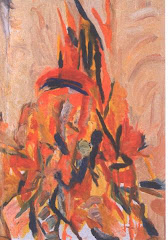Orang-utan communication is like charades
* 00:01 02 August 2007
* NewScientist.com news service
* Rowan Hooper
Gina gestured for the banana. When Erica offered her a stick of celery instead, single mother Gina, 42, impatiently gestured again. When Erica held up the banana, Gina clapped. She's better behaved than Theodora, a feisty teenager who throws sand when she is misunderstood.
Gina and Theodora are orang-utans, two of six females that have now been found to communicate with gestures in the same way as people do when playing the game charades. Erica Cartmill and Richard Byrne at the University of St Andrews, UK, presented the apes with one tasty and one not-so-tasty food item that could only be reached with human help.
As in charades, when the orang-utans' signals were completely misunderstood, they broadened the range of signals used and avoided the one that had "failed". When they were partially understood – when they were offered celery instead of a banana, for example – they narrowed down the range of signals used and repeated them.
Subtle distinctions
"The different communication strategies employed by the orang-utans in our study demonstrated that our subjects were acting on the mental state of the experimenter," says Cartmill, who designed the experiment to study whether the animals could modify their communication when misunderstood.
The animals showed that they went beyond a "he understands me" versus a "he doesn't understand me" dichotomy, to include more subtle distinctions in knowledge states.
In terms of a theory of mind – the ability to attribute different mental states to others – it's similar to what you would see in young humans, Cartmill says. "Young children do use both persistence and elaboration when they are misunderstood, but may employ slightly different strategies."
The charades strategy used by the orang-utans is a powerful way of selecting effective signals and getting at a specific meaning she says.
Sequences of charade-like behaviour have so far only been observed in zoos, but Cartmill says she expects wild orang-utans to possess the same communication abilities.
"A system for achieving common understanding more quickly by adjusting your communication to how well your recipient understands you would be particularly useful in a semi-solitary species," she says
Cartmill and Byrne tested an adult male, but he was not responsive. Orang-utans have the greatest sex differences of all the apes, so it may not be surprising to see differences in communication behaviour between them, says Cartmill.
Journal reference: Current Biology (DOI: 10.1016/jcub.2007.06.069).
Subscribe to:
Post Comments (Atom)




No comments:
Post a Comment